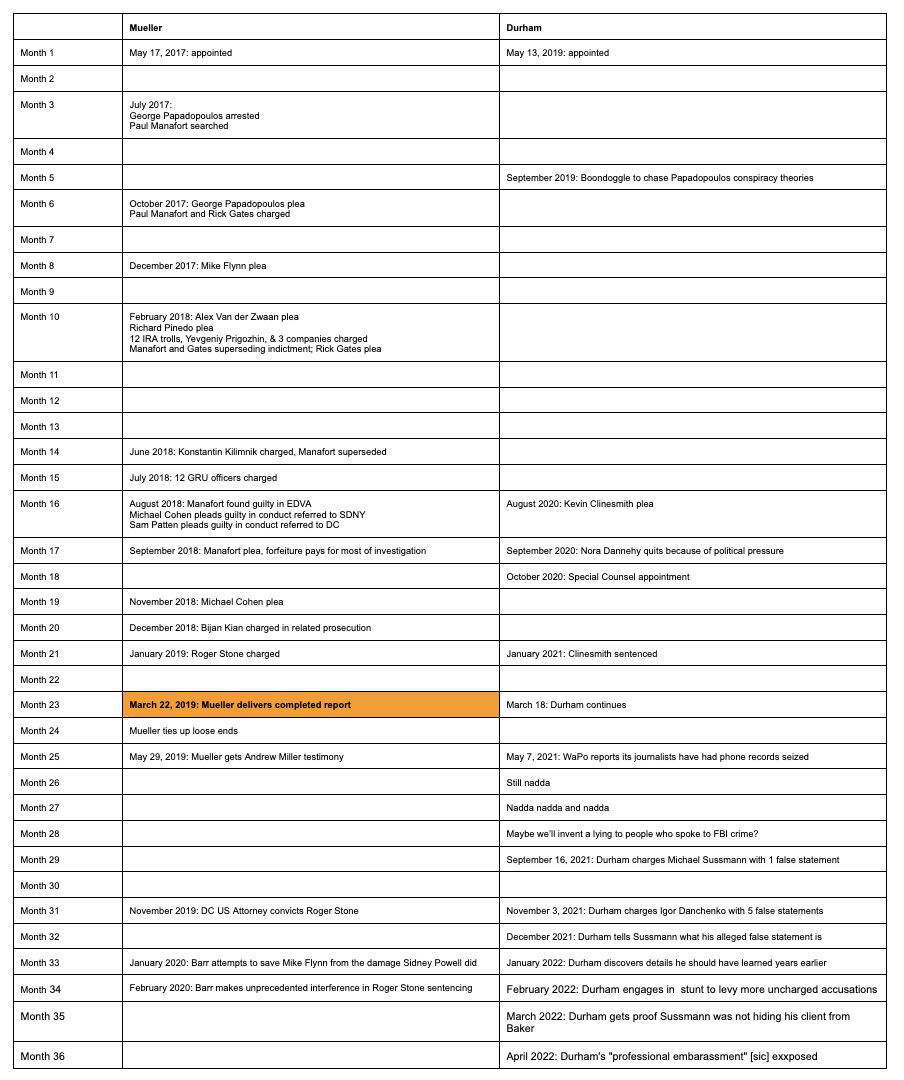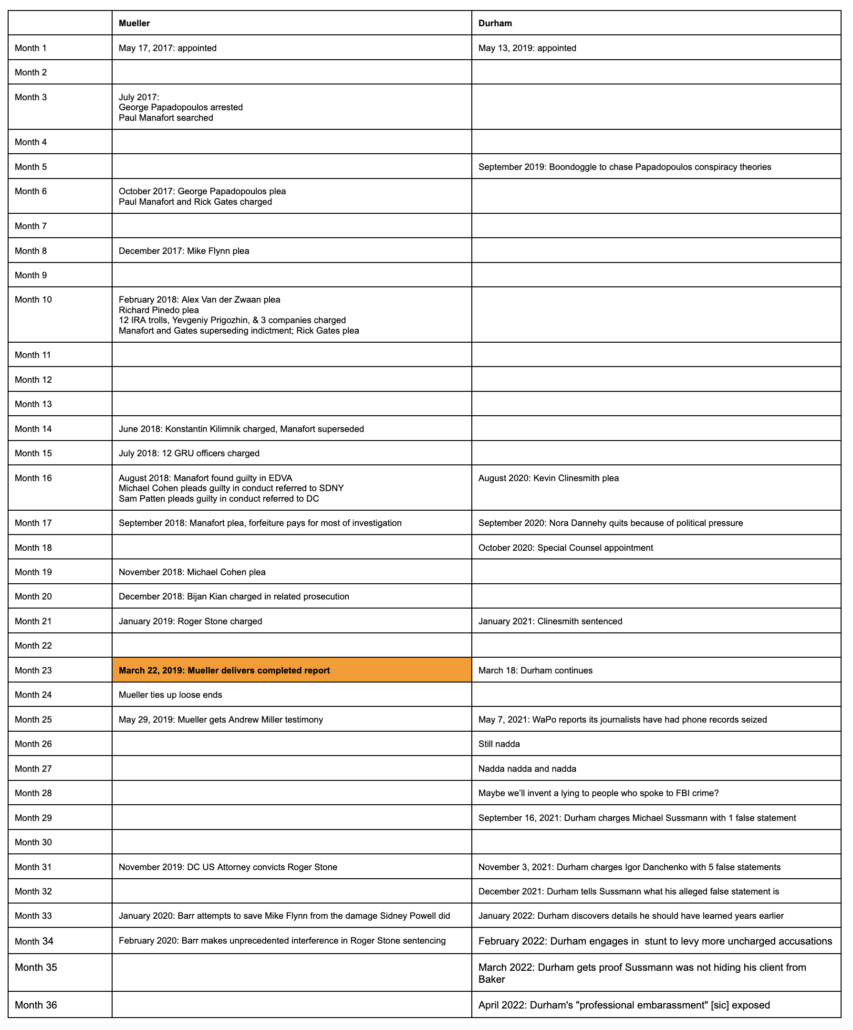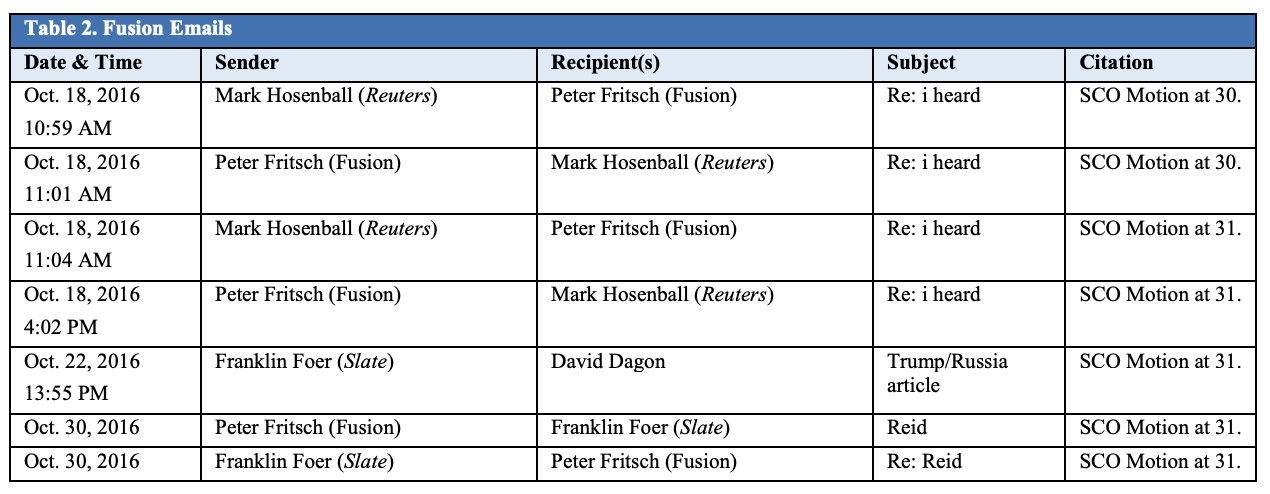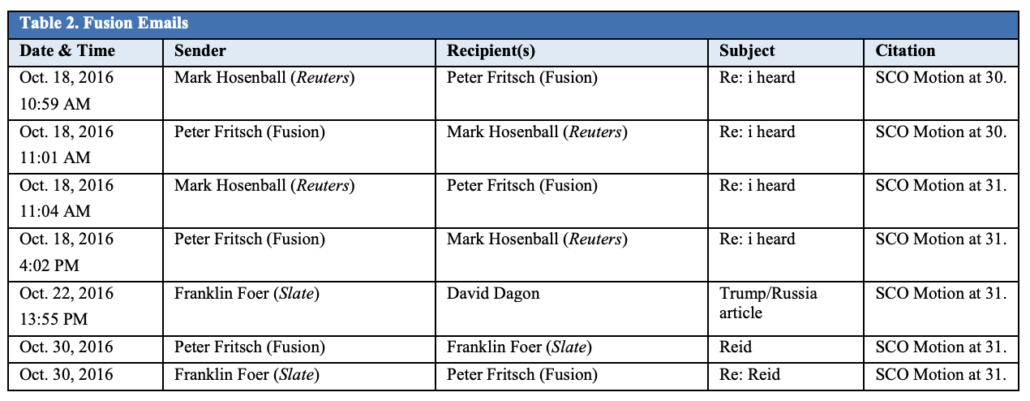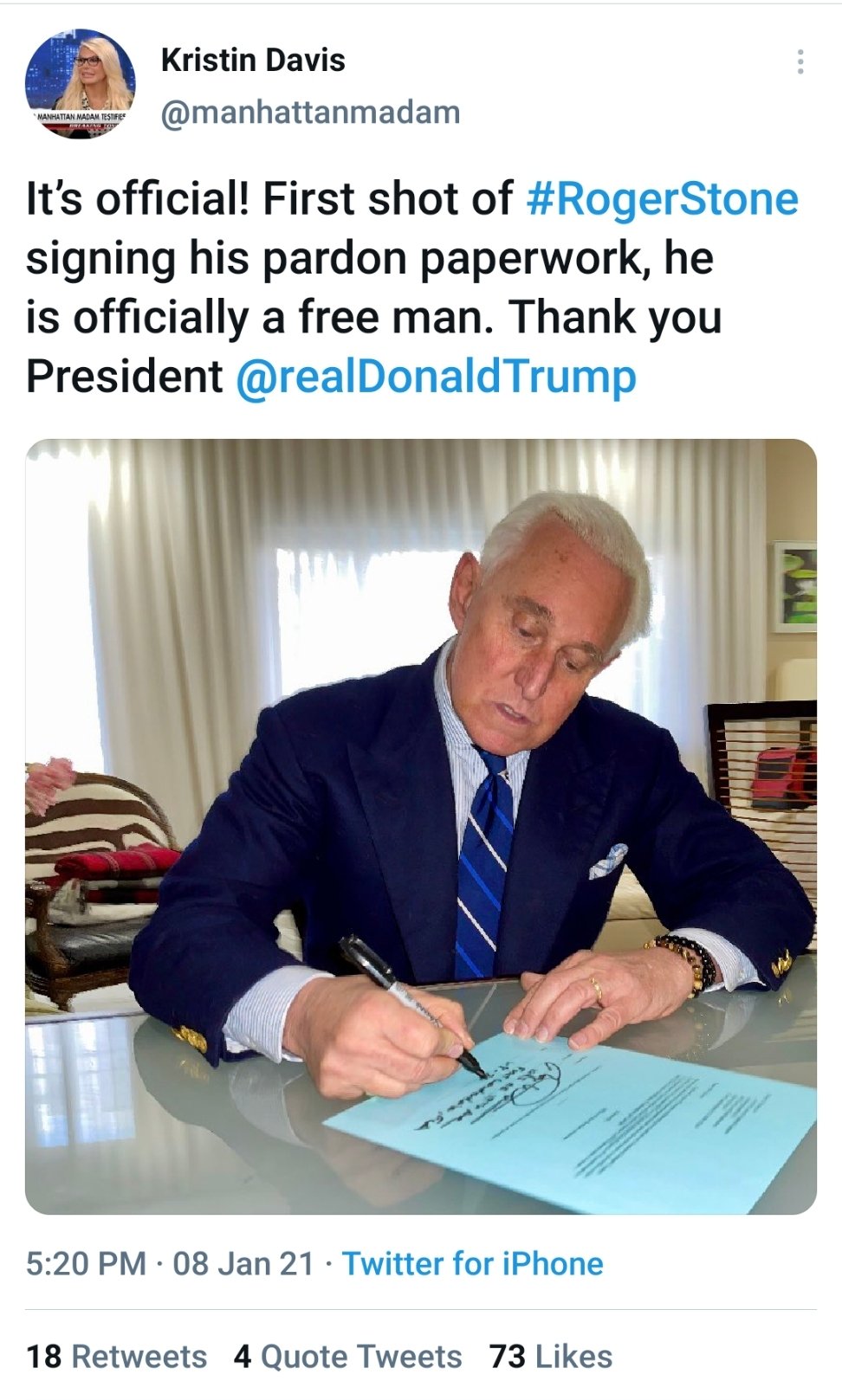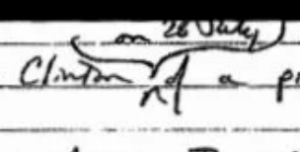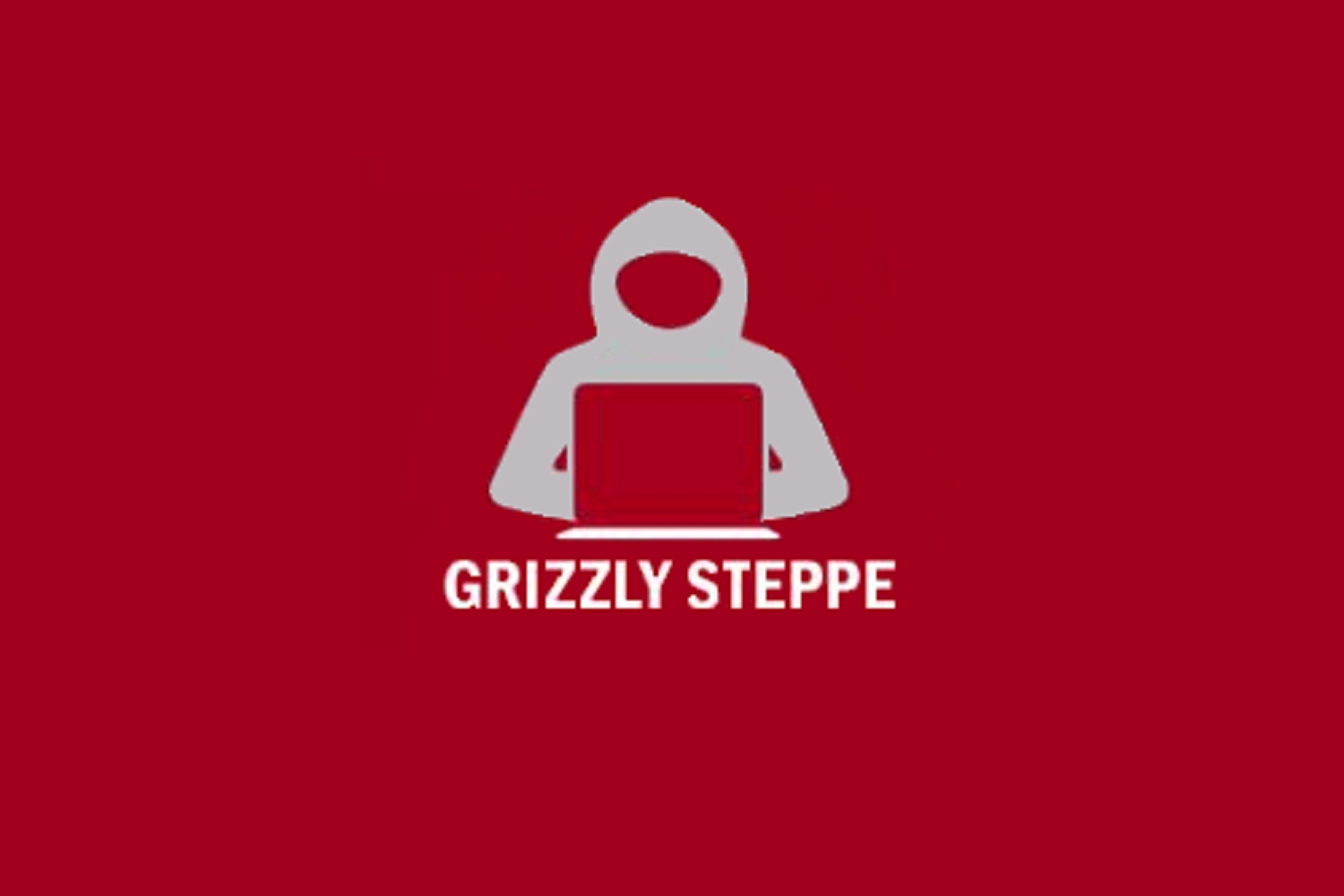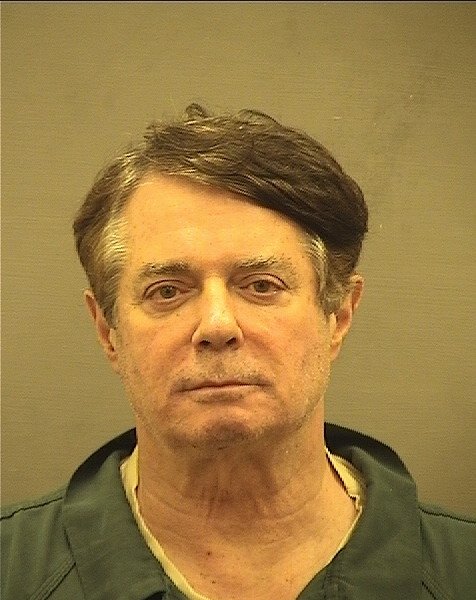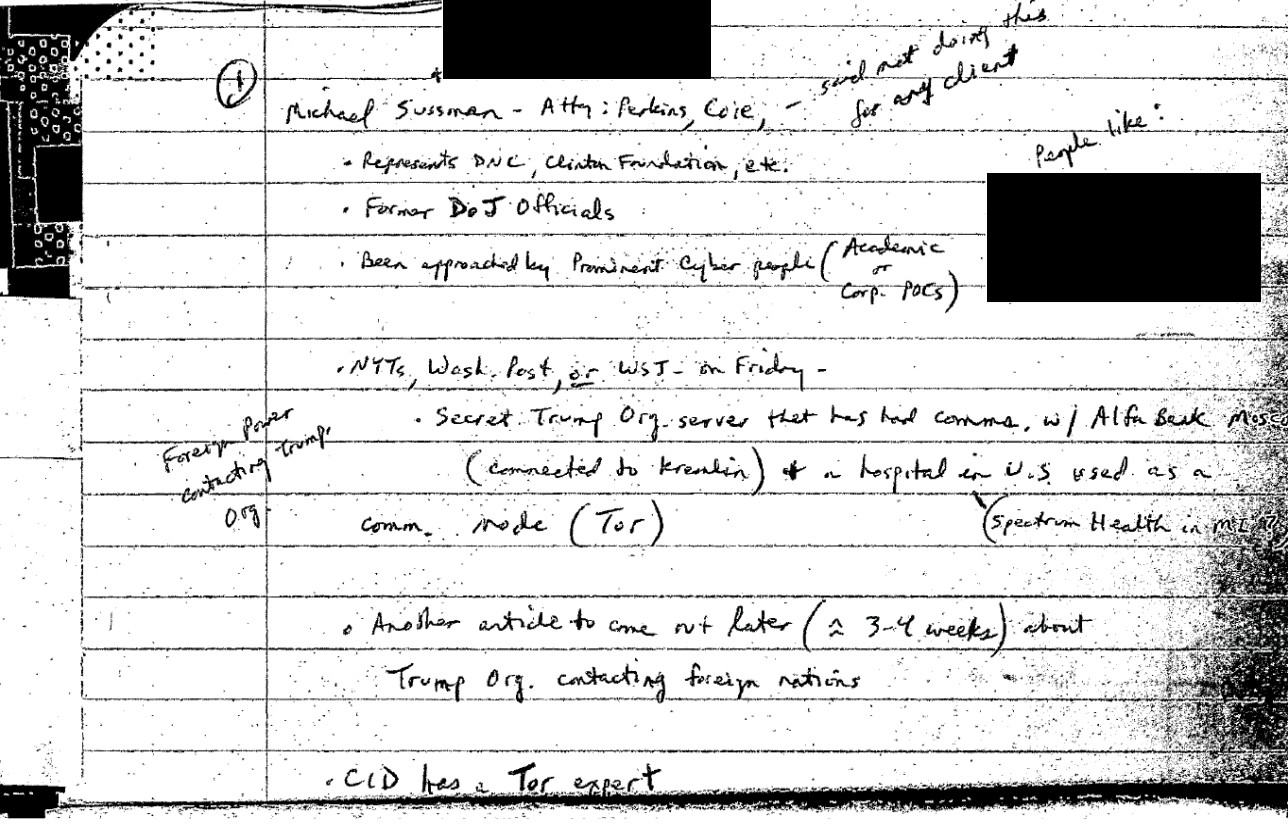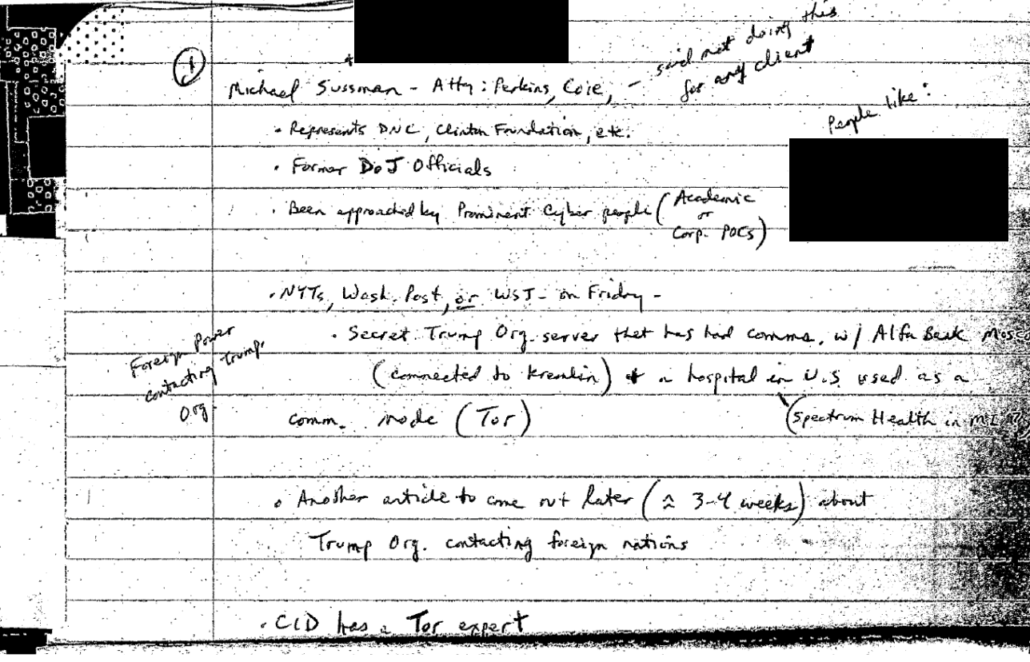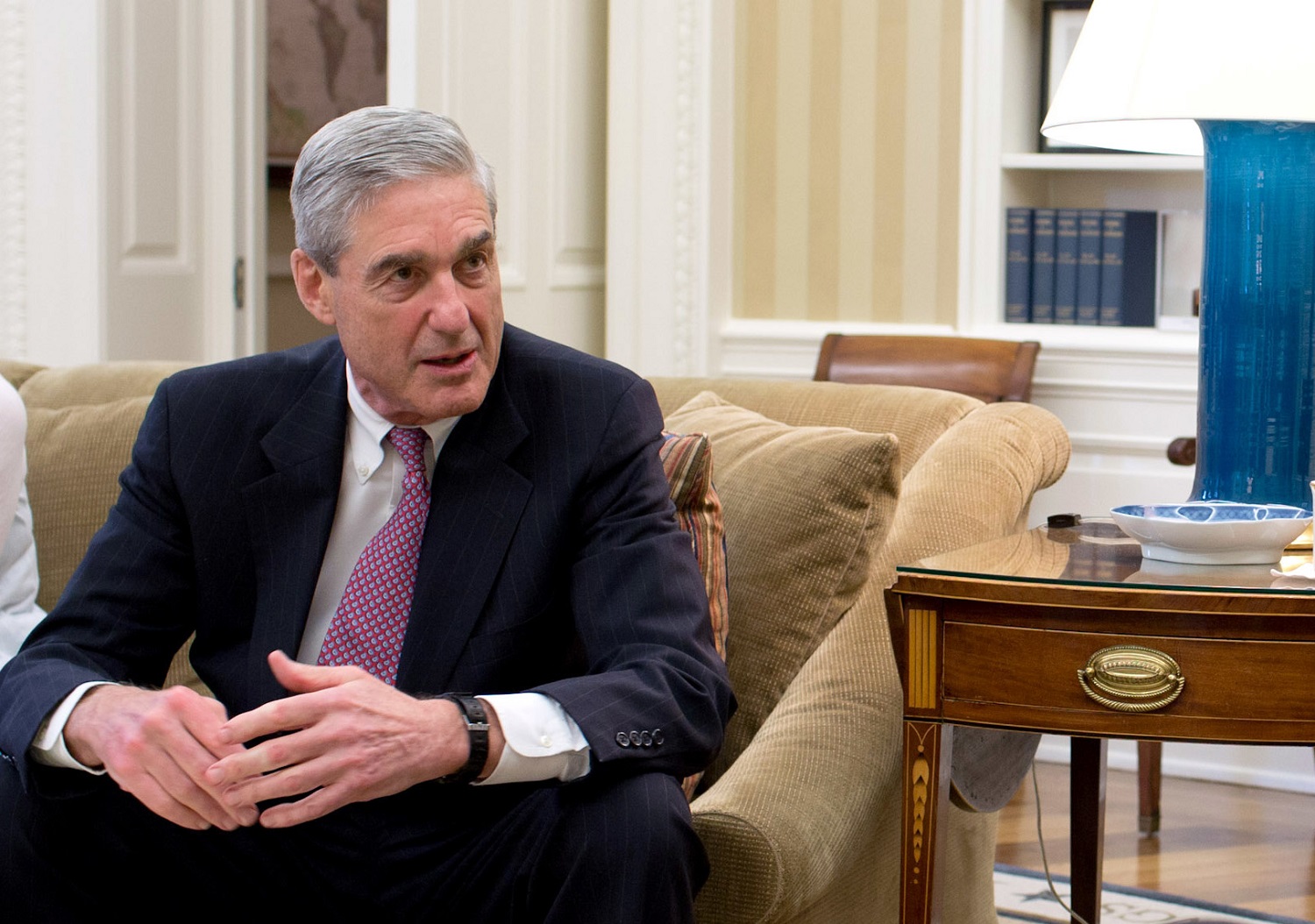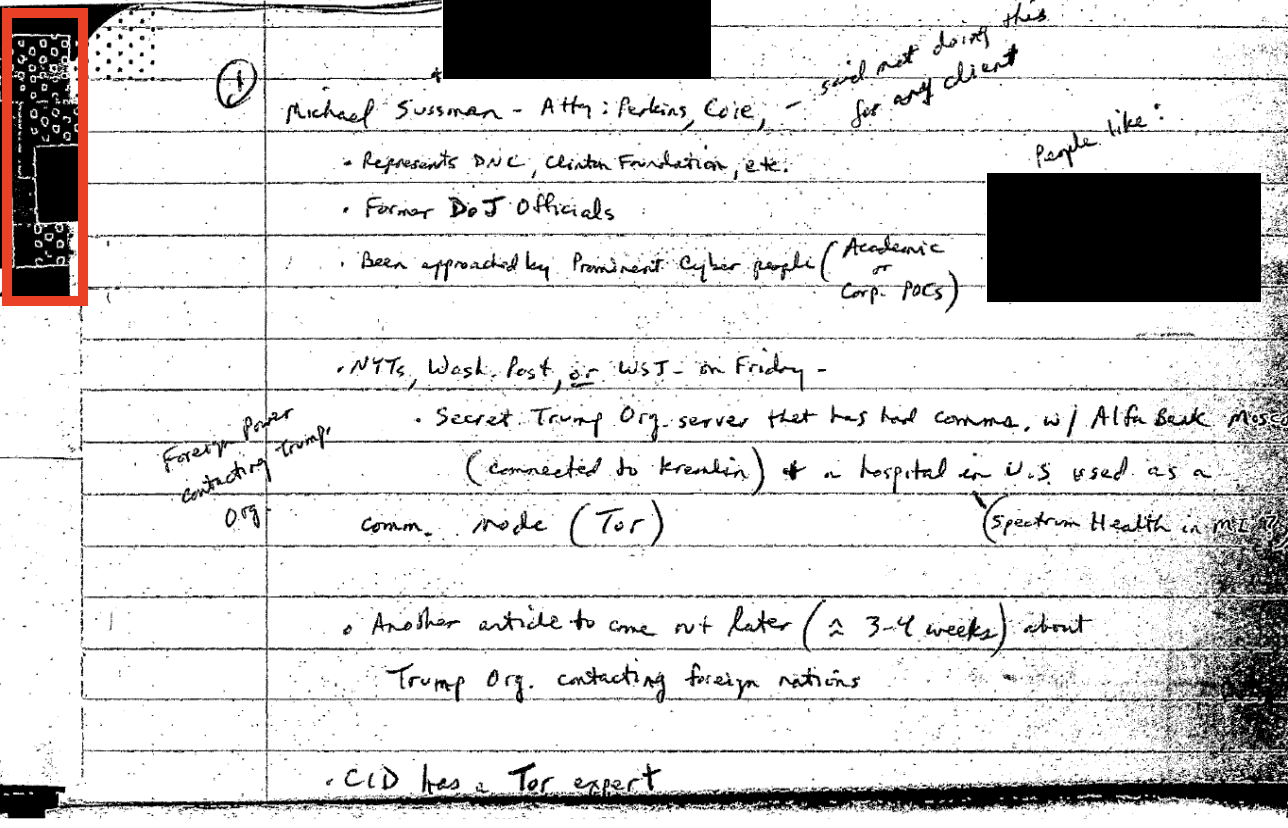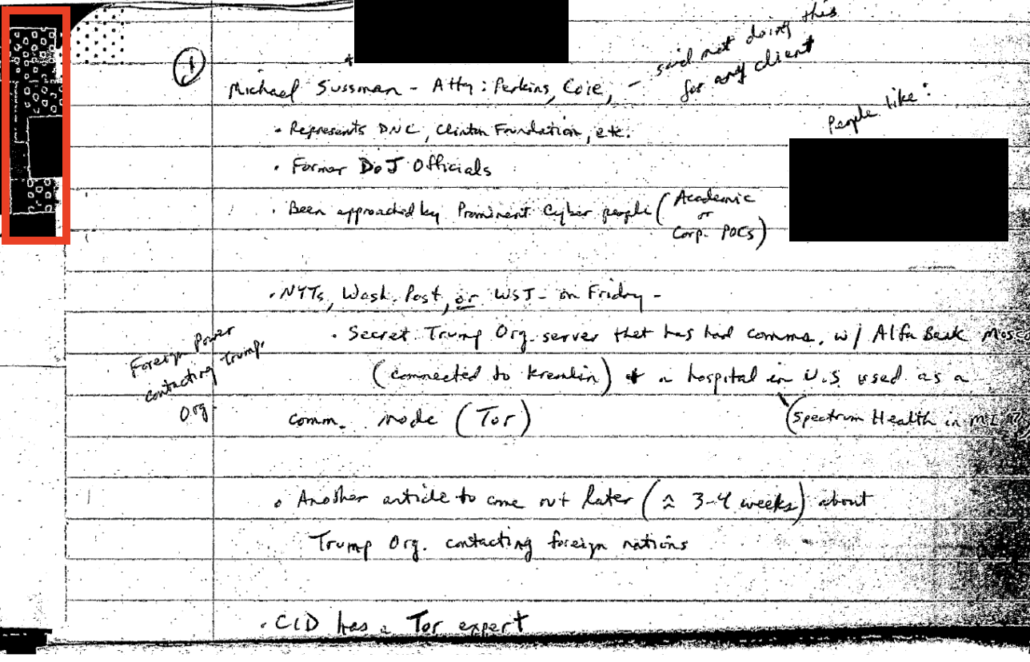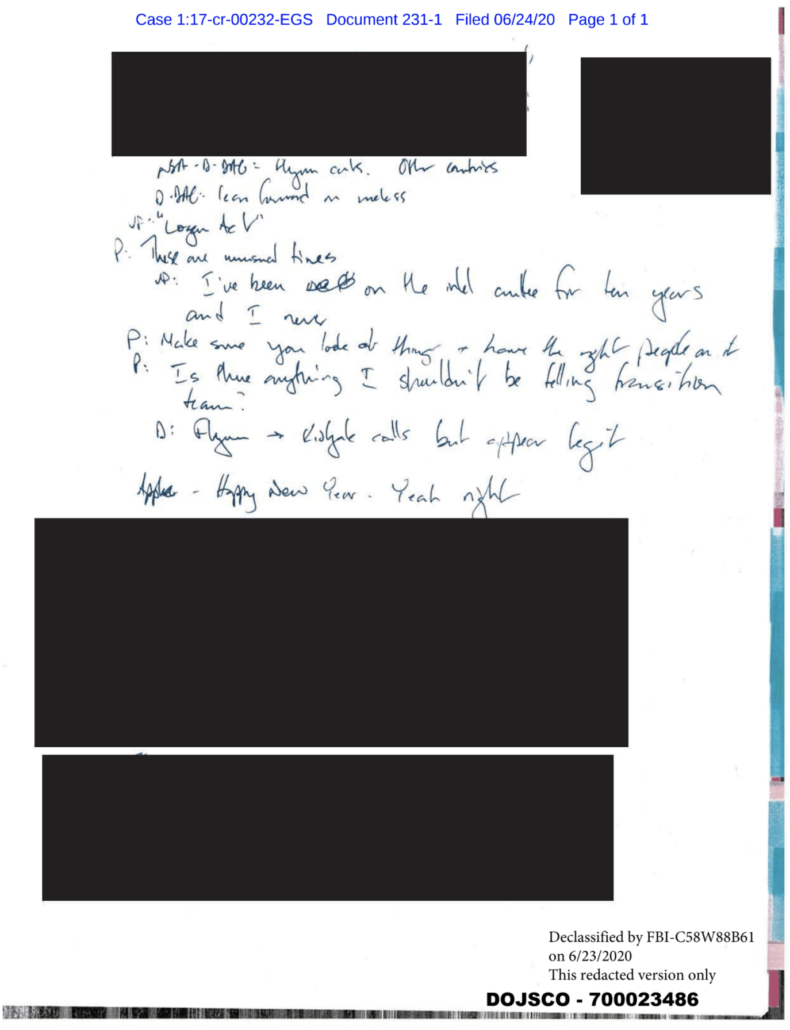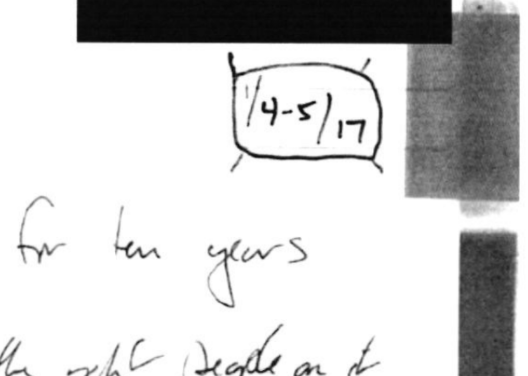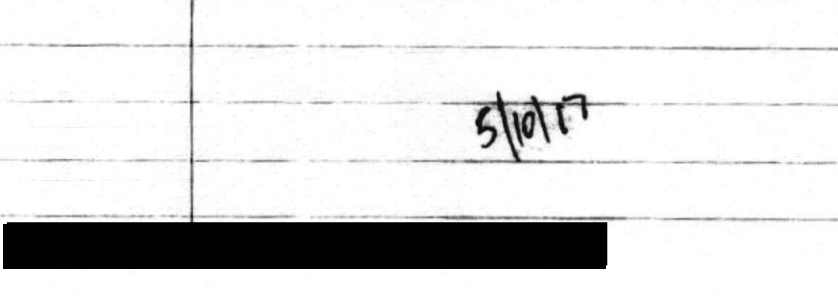“professional embarassment” [sic]: Michael Sussmann Catches John Durham Accusing First and Investigating Later, Again
There’s one more important detail from the John Durham related filings submitted Friday that’s worth noting. Michael Sussman has caught Durham making accusations before he investigated them first.
Again.
As Sussmann shows, when Durham submitted his original (timely) 404(b) notice on March 18, he said he was going to submit proof that Sussmann had failed to preserve texts he sent on his personal phone.
IV. The Defendant’s Failure to Preserve Firm Records During the Relevant Time Period
All Perkins Coie attorneys are required to maintain and preserve all firm records and communications that might exist on the attorney’s personal devices. This past week the government learned that, in connection with his departure from Perkins Coie, the defendant was required to turn over all communications constituting firm records that were contained on his personal devices. The evidence at trial will show that the earliest text messages turned over by the defendant date from November 25, 2016. There are extensive gaps in time for which no text messages were provided. The government is in possession of relevant text messages that the defendant exchanged during these time periods, including highly probative messages between the defendant and then-FBI General Counsel Baker.
Durham repeated and expanded the allegation in what he called his “supplemental” 404(b) notice, submitted late on March 23, which was actually an attempt to expand the scope of his initial notice and add two more items to it. In the interim five days, this allegation became proof — in the Durham team’s conspiracy-addled and typo-riddled brains — that Sussmann was intentionally trying to hide the text he sent James Baker setting up his September 19, 2016 meeting that Durham hadn’t found in time to charge Sussmann for lying on September 18, not September 19.
VI. The Defendant’s Failure to Preserve Firm Records During the Relevant Time Period
The defendant’s failure to preserve relevant law firm records and/or provide them to Law Firm-1 upon his departure is similarly relevant to prove the defendant’s “motive,” “knowledge,” “intent,” and “plan.” The defendant’s failure to provide these records to his employer prevented Law Firm-1 from learning about specific, highly relevant communications – including a September 18, 2016 text message containing substantially the same false statement as the one alleged in the Indictment. The defendant’s failure to preserve and provide such records supports the inference that the defendant had “knowledge” that his electronic communiations [sic] would incriminate him and, therefore, acted intentionally to conceal them. Such evidence also tends to support the inference that the defendant harbored a specific “motive” to conceal his communications, namely, to avoid criminal liability or professional embarassment. [sic] When combined with other evidence, these failures by the defendant also support an inference that the defendant intentionally executed a “plan” over time to conceal the involvement of particular clients in his work, and to prevent the discovery of evidence reflecting his own false statements on that subject.
Durham didn’t find that September 18 text until this year, as part of a two step process to find evidence pertaining to his star witness he hadn’t even sought before indicting Sussmann. In the first step, Durham finally got around to collecting evidence from Michael Horowitz and only then learned that DOJ IG had a Baker phone that Durham had been told about years ago but forgot about.
But it gets worse! As Sussmann revealed in his original 404(b) response that only got docketed on Friday, after discovering two of Baker’s FBI phones more than three months after he charged Sussmann, Durham only then asked Baker to check the cloud for his own text messages involving Sussmann. Among the things Baker provided in response were texts that showed Sussmann indicating to Baker in the days after their meeting that he had to check with someone — Rodney Joffe — before helping Baker kill the NYT story.
Finally, the Special Counsel seeks to introduce evidence that he recently received from Mr. Baker. Specifically, on March 4, 2022, Mr. Baker apparently retrieved from his personal phone copies of text messages that he had sent and received with Mr. Sussmann between 2016 and 2020. According to the Special Counsel, the text messages had been stored on the cloud and Mr. Baker had not thought to produce them earlier. (Apparently, though Mr. Baker is a key witness in the case, the Special Counsel never saw fit to serve him with a subpoena.) Those text messages include, among other things, texts indicating that Mr. Sussmann asked to meet with Mr. Baker in September 2016 not on behalf of a client but to help the Bureau; texts indicating that Mr. Sussmann told Mr. Baker he had to check with someone (i.e., his client) before giving him the name of the newspaper that was about to publish an article regarding the links between Alfa Bank and the Trump Organization; and other texts, including a copy of a tweet that then-President Trump posted regarding Mr. Sussmann. The Special Counsel argues that Mr. Sussmann failed to preserve these text messages in violation of Perkins Coie policy and that this purported violation of the policy gives rise to an inference that Mr. Sussmann intended to obstruct justice. See Original Notice at 2-3.
In other words, almost six months after charging Sussmann, Durham got around to obtaining proof that, in fact, Sussmann was not hiding the existence of a client, not to mention that the explanation he provided HPSCI in 2018 — that he wanted to give the FBI options, one of which (killing the NYT story) they took — was absolutely true.
He also obtained proof that the guy who hired Durham has been gunning for Sussmann for years — and that his star witness knew about it.
So, in response to the “professional embarassment” [sic] of having to admit that Durham had never subpoenaed his own star witness who — years earlier — a Durham-related investigator had deemed unreliable, Durham instead accused Sussmann of obstructing justice by getting a new phone. Crazier still, he leveled that accusation without first obtaining Perkins Coie’s retention policy before accusing Sussmann.
In response to the accusation, Sussmann himself subpoenaed the policy, which showed that the policy only applied to email and specifically excluded communications about scheduling a meeting like the September 18 text in question.
Sixth and finally, the Special Counsel seeks to introduce evidence that Mr. Sussmann purportedly failed to preserve certain text messages that he exchanged with Mr. Baker using his personal device, as was purportedly required by Perkins Coie record retention policies. As the Special Counsel is aware, Mr. Sussmann had not retained the text messages in question—which contain exculpatory information—because he replaced the personal cellphone he used to send them and does not store his personal text messages on the cloud. Nevertheless, the Special Counsel argues that this was a violation of Perkins Coie policy. However, when asked to identify or produce which specific Perkins Coie policies addressed Mr. Sussmann’s retention of these text messages, the Special Counsel was unable to do so. Instead, the Special Counsel disclosed that he did not have copies of the relevant firm policies when he made the allegation.
Subsequently, the defense issued a subpoena to Perkins Coie; obtained the relevant policies; and confirmed that none of those policies addressed text messages, let alone required their preservation. Instead, those policies—which govern the “retention and destruction” of client records—make clear that only significant client communications must be retained, and that electronic communications concerning scheduling do not satisfy the relevant definition of “significant communication.”
[snip]
The policy explicitly provides that emails regarding scheduling, for example, do not rise to the level of a “significant communication” and would not, therefore, trigger the policy’s retention requirements. Id. Thus even if the policy applied to text messages—and it did not—the policy would not have required Mr. Sussmann to preserve copies of his text messages with Mr. Baker.
[snip]
[T]he Special Counsel’s willingness to level this explosive allegation without even bothering to first obtain copies of the relevant Perkins Coie policies they accuse Mr. Sussmann of violating— policies that, on their face, do not require the preservation of the texts at issue—is nothing short of shocking.
As Sussmann noted in his Friday submission, effectively Durham forced Sussmann and Judge Christopher Cooper to then conduct the investigative steps that Durham should have taken before making baseless accusations to cover up his own investigative failures.
Second, in both his Original and Supplemental Rule 404(b) notices, the Special Counsel leveled unjust and baseless allegations of obstruction of justice against Mr. Sussmann—and he did so, it seems, without doing even the bare modicum of diligence that any reasonable prosecutor would do. In particular, the Special Counsel claimed that Mr. Sussmann failed to preserve certain text messages in violation of his former law firm’s (i.e., Perkins Coie’s) internal policy, and that this purported violation gave rise to an inference that Mr. Sussmann intended to obstruct justice. However, the Special Counsel leveled those incendiary allegations without even bothering to obtain copies of the relevant Perkins Coie policies that Mr. Sussmann supposedly violated. As the Special Counsel did not have the policies in question, the defense had no choice but to request that this Court issue a time-sensitive subpoena pursuant to Rule 17 to obtain the polices directly from Perkins Coie. See Ex. C at 24. As expected, none of the policies that Perkins Coie produced required the preservation of any of the text messages in question, contrary to the Special Counsel’s baseless claims. Id. Mr. Sussmann should not have had to waste his or the Court’s time because the Special Counsel took an accuse-first, gather-evidence-later approach.
By context, it appears that Durham has dropped his plan to accuse Sussmann of obstructing an investigation because — within weeks of an election in which his client was persistently hacked by Russia — he replaced his cell phone. (Note, Roger Stone also replaced a cell phone with highly relevant evidence on it in the days after the 2016 election — such as how much of the plan to pardon Julian Assange took place in advance of Assange releasing the John Podesta emails — and as far as I know, Durham’s predecessor as Special Counsel never considered charging him for obtaining a new phone.)
What remains of this incident, then, is just the “professional embarassment” [sic] of getting caught making accusations without adequately investigating those accusations first, as well as exculpatory texts that prove Sussmann was not hiding the existence of a client from the FBI.
This is not the first time that Durham has risked “professional embarassment” [sic] by making accusations before investigating them. Including the Baker-related failures laid out here, here are some of the investigative steps Durham did not take before accusing Sussmann of lying to cover up a plot involving Hillary Clinton to manufacture dirt on Donald Trump:
- Interviewing a full-time Clinton campaign staffer before accusing Sussmann of coordinating with the campaign
- Looking for the records proving that Sussmann and Rodney Joffe helped the FBI kill the NYT story until after he charged Sussmann
- Learning how closely the FBI worked with Rodney Joffe on DNS-related issues
- Finding the January 31, 2017 CIA meeting record at which Sussmann clearly explained he was sharing an allegation at the request of a client
- Asking DOJ IG for evidence of the investigation on related topics that found no evidence Sussmann committed a crime
- Discovering a similar tip that Sussmann had anonymously shared with DOJ IG on behalf of Joffe
- Obtaining two James Baker phones, one of which Durham had been informed about years earlier
- Subpoenaing Baker for exculpatory texts involving Sussmann he stored on the cloud
I suspect there is far more, including never checking DOJ records to learn that someone totally unrelated to the Democrats was pushing the NYT story more aggressively than Sussmann in the period in question, to say nothing of all the evidence showing that April Lorenzen’s suspicions that Trump’s campaign manager was money laundering payments from oligarchs close to Putin were absolutely correct.
As of Wednesday, Durham’s investigation entered its 36th month. The “professional embarassment” [sic] has been going on so long, it’s hard to even capture it all anymore (but here’s a more accessible version). What’s clear is that every time he finds exculpatory information he should have obtained before charging Sussmann, he doubles down on his conspiracy theories — an approach that’s bound to lead to more “professional embarassment” [sic] down the line.
Update: Clarified that according to the documents filed Friday, Durham only obtained the September 18, 2016 text on March 4. Also fixed my own “embarassing” [sic] typo in the table below.

